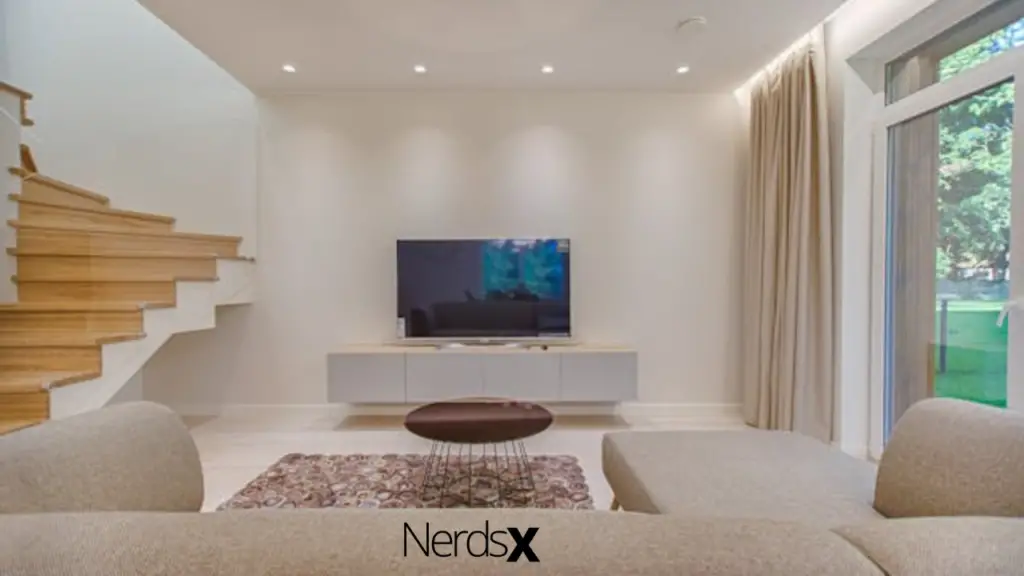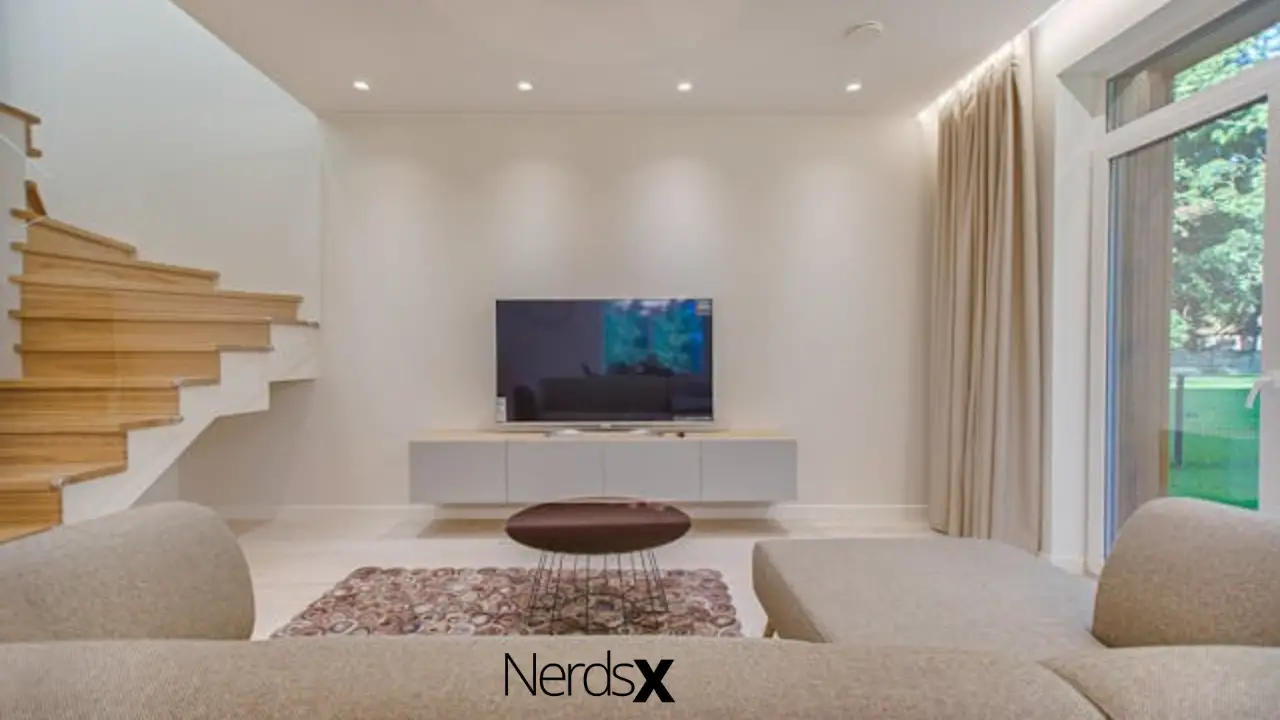Smart TVs simplify your life by allowing you to configure your gadgets and promoting a more organized lifestyle. They are, however, machines, and they can have malfunctions and problems that cause them to perform less than optimally. The Samsung Smart TV, frequently turning on by itself, is one of the most common complaints. The causes of this situation could be setting your timer on accidentally, software upgrade, and many more.�?
The Samsung Smart TV reigns supreme among televisions. It’s inconvenient to have your Samsung Smart TV turn on without your authorization, especially because smart TVs are an expensive purchase.
But don’t be alarmed. That is a frequent problem, and there are various ways to solve it at home.
Troubleshooting and Diagnosis for Samsung TVs That Turn on by Themselves
For various reasons, your television may switch on at any time. It’s possible that you set a timer to turn it on at a specific time, that the remote isn’t working properly, that your TV is undergoing software upgrades, or that you have Anynet+ (HDMI-CEC) switched on. When certain HDMI devices (such as your DVD player) switch on, they instantly turn on your TV.
Don’t be alarmed if your Samsung television switches on by itself suddenly. Often, this is due to a minor malfunction that you can fix in a couple of minutes.
Below are some quick fixes to solve this issue.
1. Reconnect the Power Cable
Samsung Cabinets are commonly used to store televisions. There may be a detachable cover on the back of your TV if you need to reach the rear of it. With a screwdriver, carefully remove the lid and unhook the power supply cord (don’t pull; use pliers).
First, double-check that the power cord is securely connected. If you’re certain it’s properly attached, disconnect it before connecting it back in for a few seconds. That frequently restores power to the television.
This reconnection of power cables is a frequent solution for an older Samsung television model; if you have access to one, you should try it out. Disconnect the cable from the television, reattach it, and re-plug it. If the HDMI slot has any obvious fractures, it’s conceivable that your TV will operate again after minor repairs.

2. Disable Anynet+ (HDMI-CEC)
HDMI-CEC enables your HDMI devices to operate together automatically and allows you to control some of your connected devices with your TV remote. It also offers HDMI devices limited control over your TV, allowing you to control some connected gadgets with the TV’s remote control.�?
Using the TV remote, you can operate your DVD player if your TV has HDMI-CEC. Alternatively, your TV may automatically convert to an HDMI input when you turn on your DVD player.
It’s common to want to prevent your HDMI device from turning on your TV as soon as your source device is turned on. You’ll probably want to do this with all of your HDMI devices.
Samsung’s Anynet+ is a handy feature that lets you operate several home entertainment devices from a single remote, such as your TV and sound system. On the other hand, if the TV turns on by itself or the screen goes dark, there could be a problem with this function. Turn off Anynet+ in the Settings menu > General > External Device Manager to fix it.
NOTE: Disabling Anynet+ will prevent your TV from responding to orders from a connected remote control.
3. Disable the Sleep Timer
The Sleep Timer is programmed to turn off or turn on your television at the specified time. While this function might be useful, it’s preferable to turn it off if you’re worried about energy efficiency.
Locate the settings feature on your Samsung TV Remote Control (or choose ‘Home’ on your remote and scroll left to find ‘Settings’) to disable your sleep timer. Scroll to ‘General,’ then ‘System Manager.’ There should be two options: ‘Sleep Timer’ and ‘Off Timer.’ Click any of these to bring up a submenu.
4. Disable the SmartThings App
The SmartThings app connects to your Samsung TV and allows you to control numerous devices from anywhere in the home. You can also use your phone to switch on and off lights, alter the temperature in your home, and lock your doors from anywhere.
Samsung’s SmartThings is a popular smart TV function switched on by default. When you enable this option, your TV will turn on when a nearby smart device, such as your thermostat, does.�?
Alternatively, Consumer Reports claims that this function isn’t important and that you shouldn’t have it activated if you don’t use it frequently.
If you have a Samsung TV, double-check that SmartThings is off. If you configure your TV to turn on automatically when a phone is attached, all you have to do is turn it off. The procedure differs based on the SmartThings version you have installed on your phones, such as Android or iOS.
To deactivate SmartThings, take these steps:
- On the remote, press the Home button.
- Go to the Settings menu.
- Power On with Mobile > General > Network > Expert Settings
- To turn it off, select the OFF option.
5. Firmware Upgrading
It’s crucial to keep your TV updated with the newest software, like any other device. There are some methods to discover what firmware version your TV is on — or if you need assistance updating — there are options.�?
To begin, navigate to your TV’s menu and seek the option labeled “system information” or something similar under the system or settings tab.
Go to your TV’s settings menu and look under the System tab to see which software version your TV is running. The most current update, an earlier version, and a preceding ancient version are likely to be the three alternatives.
If you notice an older version, it might be causing problems with your TV’s regular usage or pleasure.
When you switch on your TV, it will most likely immediately update. However, the procedure might occasionally fail, resulting in the screen not updating.�?
Check whether you have the most recent version downloaded from the Samsung app store on your TV. If this isn’t an option for you, consider updating the software on your TV (which you can find in the settings).
6. Power-Cycle Your Samsung TV
The first step in troubleshooting is to power-cycle your devices. When you have a problem with electrical equipment, power it off and on again to ensure there aren’t any leftover power difficulties.
You may accomplish this by disconnecting the TV from the wall, waiting 30 seconds, and plugging it back in a while, pressing the power button. This procedure helps refresh the system on your Samsung TV and makes it perform more smoothly.
Power-cycling, your Samsung TV might help you resolve various problems with your device.
7. Disable Eco mode
As the name implies, Samsung TVs have an Eco mode that helps the device save energy by automatically turning off certain settings. You probably don’t need these options, and you could even have problems due to them.
It’s simple to turn off Eco mode on your Samsung TV by following these steps: On your remote control, go to Settings. Select the General option. Eco Solution is the best option. Disable Power Saving Mode, Eco Mode, and Motion Detection to switch off Eco Mode.
8. Replace the Faulty PSB capacitors
Capacitors are a significant component of television Power Supply Boards (PSB).
Consider them energy storage centers; they level out voltage spikes induced by lightning or the opening and shutting of electrical switches.
They provide a constant, predictable electrical current to the circuits in your television! That is when they are adequately functioning.
Unfortunately, Samsung has a history of employing undersized capacitors in many televisions, to be exact, two capacitors on the Power Supply Board (470uf to 3300uf 10v).
These defective capacitors are well-documented flaws. In 2012, users filed a class-action lawsuit, followed by another in 2017.
Samsung TVs were allegedly turning on and off by themselves due to malfunctioning capacitors in both instances.
Samsung, of course, agreed to settle the cases and admitted no wrongdoing.
You may remove the back paneling of your TV and check to see if any of the capacitors on your PSB are bloated or appear to be leaking if you’re so motivated. Faulty capacitors are often visible to the naked eye.
Consider changing the complete power board if you can’t find the particular capacitor/capacitors that are faulty.
If you identify the defective capacitor, you’ll need to order a comparable capacitor with the same or better values and use a soldering tool to remove and replace the bad one.
9. Replace the Main Logic Board
If your Samsung TV still turns on by itself after you’ve changed your PSB (or the damaged PSB capacitors), the problem is most likely with your main logic board.
You will have to replace the complete logic board.
A burned IC (integrated circuit, or microchip) on the primary logic board causes this typical problem with Samsung TVs.
Check if any of the ICs on the board are discolored or appear burned.
Each chip should have numbers that you can read. If you can’t read a chip, that’s most likely the problem.
10. Samsung TV support & warranty
If you cannot address the issue on your own, you should contact Samsung support.
They provide several service alternatives, including in-home and mail-in options.
The cost varies based on the final diagnosis and whether or not the work has a warranty.
The great news is that you’ll be able to have a trained Samsung technician examine your device.
You may also lookup whether your TV is covered by Samsung’s warranty online.
Unfortunately, Samsung television warranties are only good for one year, and the majority of occurrences of TVs turning on by themselves are on televisions that are several years old.

